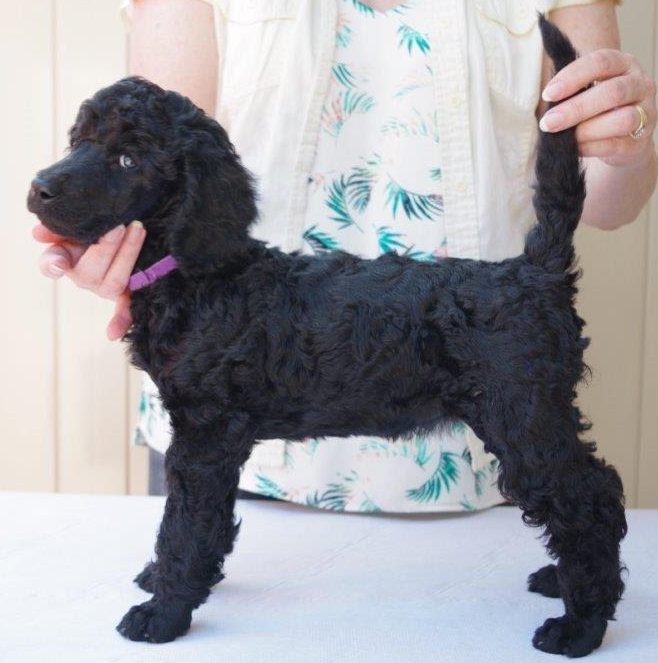
Breeding demonstration #1 – Outcrossing
There’s a lot of information on the BetterBred.com analyses, and it will take a little bit for most readers and members to get comfortable with how to use the information. So we are going to show you a few instances of what it offers and what to look for.
In last year’s landmark Standard Poodle study, it was proven thatat least 70% of all Standard Poodles the world over are genetically as similar as half siblings, while the remaining 30% have more than twice as much genetic variation as the larger portion has.
For Standard Poodle breeders, the directive is to rebalance that diversity – to retain what’s best about the larger group and to redistribute the smaller group without losing track of the diversity and having it drown in a sea of what is essentially one enormous immediate family.
One of the ways this can be achieved (and we’ve known this a while) is to breed out to Miniature Poodles. This is possible in the US because the AKC considers the varieties a singular breed. There are many, many breeders who feel very strongly that this is a terrible idea. Our position is to report the science and the results. Certainly no breeder should do something she or he firmly opposes. However, it’s been happening now for years, since Dr. John Armstrong recommended it – and Dr. Pedersen repeated that recommendation in his studies. Our job at BetterBred.com is to track these events and offer facts for breeders to use to make up their own minds.
So we are going to take a look at a few breedings and comparisons of a few different litters and dogs, and the first is a breeding of half Standard/half Miniature stud to a full Standard Poodle bitch. As you can see from the screenshot below, Rudy is very outbred, with an IR of -0.15. This is unusually low, but to be expected since his dam was a rather typical N. American Standard Poodle and his sire was a German Miniature Poodle. Since IR is mostly a measure of homozygosity, and Standards and Miniatures are quite different, it makes sense that the IR is so low. To put it into context, you can always look at it in comparison to the Breed Average, which in this case is 0.03. By contrast, the dam is fairly homozygous – and significantly above the Breed Average. (We are only addressing IR in this post for simplicity’s sake, but HL and Percent Homozygous are other measures of inbreeding and their merits will be addressed in another post.)
In the secondary Inbreeding Table, there are the estimated Litter Averages. Since Rudy and this dam are quite different genetically, there is a wide possible range of inbreeding possible in this litter. Puppies could have IRs as high as 0.31, which is exceedingly high, or as low as -0.24 which is exceedingly low. This indicates that both parents have some ancestry that is extremely different and some that is exactly the same. Puppies could get mostly one or the other! Since puppies from this breeding will all have the same COI, you can see that while that puppies can end up with very different genes.
The Alleles Table shows how many Infrequent, Neutral and Highly Frequent Alleles are in each dog. These are assessed from locus to locus based on breed frequencies. You can easily see that Rudy is unusual, with an Outlier Index of 0.42, compared to the Breed Average of 0.25, whereas the dam of this litter has an OI of 0.23, just under the average.
So then looking at the litter average OI, in one breeding the average for puppies will be well above the breed average at 0.33. But be aware – the lowest OI in the simulated puppies is 0.15, and the highest is 0.56, which is much higher even than Rudy. This again has to do with whether a puppy inherits the more or less unusual genes overall.
Before anyone jumps to any conclusions, it’s important to remember that the alleles involved and their frequencies, are not being assess for what each of them does, and it doesn’t matter WHICH of the alleles is infrequent or highly frequent – what matters is the ratio of the unusual alleles to the common alleles. Unusual dogs have more unusual alleles (most of them different from one unusual dog to the next) and highly typical dogs have more typical alleles. This is NOT an indication of good or bad – it’s just a matter of math. Good and bad are up to breeders to decide – by assessing them the old fashioned way, based on temperament, structure and health.
Now that we have seen a bit of the litter estimates, let’s look at the actual puppies.
Here’s the first puppy, and I’ve included the health data as well. When a breed has enough data from affected dogs, these comparisons can start to be watched. You can see that Standard Poodles with higher IR are more at risk for sebaceous adenitis, but not Addison’s. You can see that there’s some difference between healthy Standard Poodles and SA affected and Addisonian poodles. Higher OI is better.

So as you can see, the puppies fall well within the litter estimates, but do have some range. And just because they all have the same Miniature grandfather, not all of them are terribly unusual. If you worry about too much outcross influence, this shows how quickly and easily outcross influence can be diluted in two generations, since one of the puppies has an OI that is below the breed average, and lower in fact than her full Standard dam. If on the other hand you are someone concerned with bringing in diversity, you can see how assuming that all will be equally unusual is not at all a guarantee.
See if you can guess which puppy is which!
More demonstrations to come….











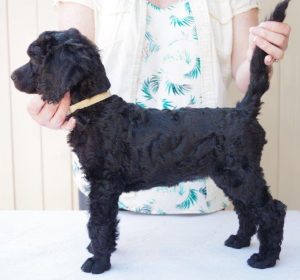
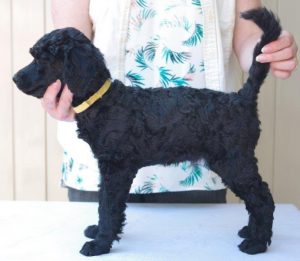
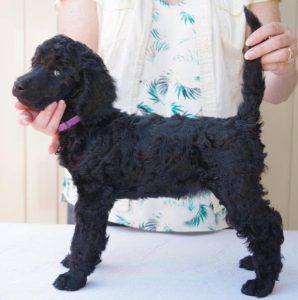
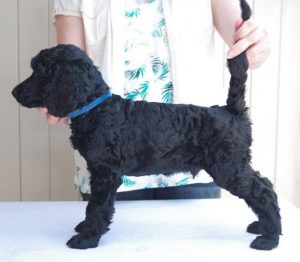
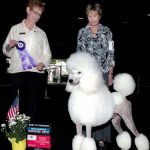 Next Post
Next Post


